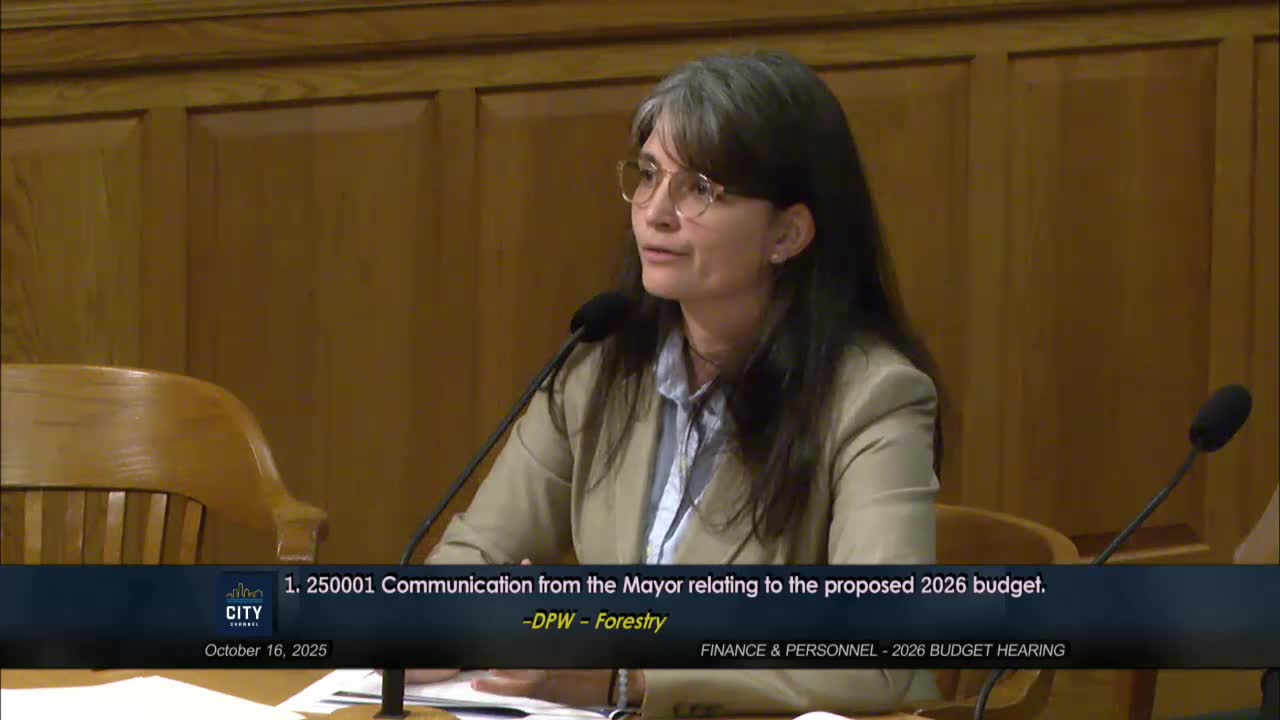DPW to expand telematics and brine use as snow-and-ice crews balance leaves and storms
October 16, 2025 | Milwaukee , Milwaukee County, Wisconsin
This article was created by AI summarizing key points discussed. AI makes mistakes, so for full details and context, please refer to the video of the full meeting. Please report any errors so we can fix them. Report an error »

DPW operations described snow-and-ice plans for 2025-26, including wider use of telematics and brine pretreatment to reduce rock-salt usage and better target plow/salt deployment.
Director Danielle Rodriguez and snow-and-ice staff told the committee that the department now deploys telematics on snowplow trucks and will test an Esri-based map that overlays plow routes and GPS data for internal monitoring. Telematics will be used to measure salt dispensed per lane mile so supervisors can compare practice with departmental spreading targets. The department retains a policy of holding salt inventory sufficient for severe winters (45,000 tons budgeted in 2026) and said salt domes and storage are part of long-term resiliency planning.
DPW emphasized a trade-off that shapes fall operations: leaf crews and equipment are largely the same staff and vehicles used for snow-and-ice control, so early storms force the department to pause leaf consolidation and reassign resources to roads for safety. Officials urged residents to rake early and use the department's online leaf-collection map to monitor progress; they also said the department would publish clear pre-winter notices about recycling schedule changes.
Committee members asked about pilot alternatives to rock salt; DPW said it had tested several brine additives and has deployed brine pretreatment for roads, and it will continue to evaluate less-damaging liquids. The department also said it is testing telematics-based performance measures during this winter and will report results to the committee.
The committee requested telematics and salt-use data and asked the department to track salt purchases and usage on a seasonal basis for future budget deliberations.
Director Danielle Rodriguez and snow-and-ice staff told the committee that the department now deploys telematics on snowplow trucks and will test an Esri-based map that overlays plow routes and GPS data for internal monitoring. Telematics will be used to measure salt dispensed per lane mile so supervisors can compare practice with departmental spreading targets. The department retains a policy of holding salt inventory sufficient for severe winters (45,000 tons budgeted in 2026) and said salt domes and storage are part of long-term resiliency planning.
DPW emphasized a trade-off that shapes fall operations: leaf crews and equipment are largely the same staff and vehicles used for snow-and-ice control, so early storms force the department to pause leaf consolidation and reassign resources to roads for safety. Officials urged residents to rake early and use the department's online leaf-collection map to monitor progress; they also said the department would publish clear pre-winter notices about recycling schedule changes.
Committee members asked about pilot alternatives to rock salt; DPW said it had tested several brine additives and has deployed brine pretreatment for roads, and it will continue to evaluate less-damaging liquids. The department also said it is testing telematics-based performance measures during this winter and will report results to the committee.
The committee requested telematics and salt-use data and asked the department to track salt purchases and usage on a seasonal basis for future budget deliberations.
View full meeting
This article is based on a recent meeting—watch the full video and explore the complete transcript for deeper insights into the discussion.
View full meeting
